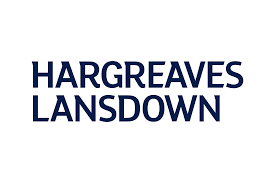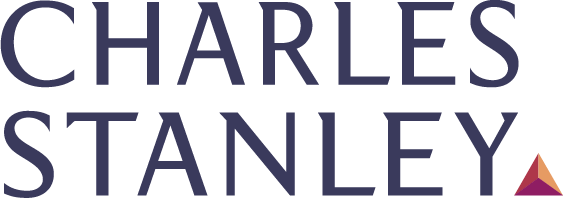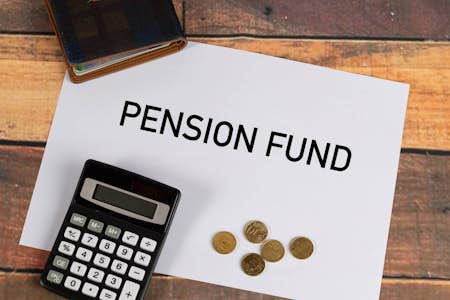Wave goodbye to confusion around pension jargon, and help yourself keep your search for pension products simple with this handy guide.
Maximise your retirement fund with our panel of pension providers. Click on your chosen provider to get started!
Adjusted income
An adjusted income is your annual income combined with the value of your pension contributions to a workplace pension.
So, if you earn £40,000, and are paying £2,000 into your pension, which is matched by a £2,000 employer contribution, then your adjusted income is £44,000.
Your net adjusted income is your total taxable income before pension contributions. Read up more about adjusted income on the HMRC website.
Annual allowance
Your annual allowance is a cap on how much you can contribute to your pension tax-free each year. Currently, the annual allowance is £40,000 for everyone, apart from high earners with adjusted incomes exceeding £240,000.
You will receive tax relief on contributions to your pension up to £40,000 at your standard rate of income tax. If you exceed this limit, you’ll pay tax on your pension contributions.
Annual management charge
An annual management charge (AMC) is one of the fees charged on direct contribution (DC) pensions. The annual management charge will be either a flat fee or an annual % rate. You can pay it monthly or annually. Most AMCs are below 1%.
Annuity
An annuity is a guaranteed income that covers a fixed term for the rest of your life. You can buy an annuity with your pension fund.
Auto-Enrolment
It is the law for employers to enrol certain employees into pension schemes. For the 2021/22 tax year, anyone older than 22 earning over £10,000 must be auto-enrolled into a pension scheme and be given the option to opt-out. Those who earn more than £6,240 must be given the option to join a pension scheme.
You’ll then have to pay at least 5% of your qualifying earnings into that pension, while your employer must pay at least 3%. Qualifying earnings are what you earn between £6,240 and £50,270 for 2021/22.
Carry forward rule
The carry forward rule enables you to make pension contributions above the standard annual allowance of £40,000 with tax relief, providing you can carry forward your unused allowance from the previous three years.
You can carry forward unused allowance up to the value of any annual earnings. Anything above that will be subject to income tax.
Contribution charge
The rare contribution charge is a fee taken when you pay money into your pension pot. Contribution charges are pretty much extinct.
Crystallised pension
When you cash in your pension using either a drawdown or annuity, it then becomes a crystallised pension.
Crystallised funds pension lump sum
Also called a pension commencement lump sum (PCLS). When you crystallise your pension, you have the option of taking a 25% tax-free lump sum. This is the technical name for that lump sum.
DWP
Department of Work and Pensions. The government department responsible for welfare, benefits, pensions and child maintenance in the UK.
Defined benefit pension scheme
Defined benefit pension schemes (DB) are also called final salary pensions. They are a type of workplace pension that pays a retirement income based on your salary and employment record/duration with a company. These are more common in the public sector and long-term established organisations like banks.
Defined contribution scheme
Defined contribution pension (DC) schemes may also be called ‘money purchase’ pensions. You contribute to a DC pension from your own savings or employee and employer contributions.
DC schemes can either be workplace pensions or private pensions (also known as personal pensions). They also cover SIPPs - self-invested personal pensions.
Defined contribution pension schemes are typically invested into a range of assets including cash, bonds, shares and property.
Drawdown
Income drawdowns are also known as flexible retirement income. They allow you to leave your pension savings invested whilst you withdraw money as and when you need it.
Emergency tax code
Emergency tax is applied temporarily by HMRC if they don't have up-to-date details of your income. In this situation, you may be placed on a temporary emergency tax code when you start taking from the taxable 75% of your pension pot. You can claim emergency tax back from HMRC.
Ethical Pension/Fund
Ethical pension funds allow you to invest your money in shares linked to sustainability, green energy and other ethically sound objectives. Ethical pensions also avoid sin stocks or investments linked to conflict.
Fund
A fund is an investment component. A pension fund is an investment product where your savings will be invested for long term growth.
Fund manager
The fund manager manages an investment fund. They’re also called money managers. They essentially make the investment decisions for the fund, such as choosing assets, stocks and shares to invest in.
Guaranteed minimum pension (GMP)
The guaranteed minimum pension (GMP) was a type of workplace pension scheme. It was provided to employees in the public sector and applied to defined benefit pensions contracted out of the State Earnings-Related Pension Scheme (SERPS) between April 6, 1978, and April 5, 1997. The GMP was designed to meet similar criteria to the SERPS.
Anyone enrolled onto a GMP between 1988 and 1997 would have received inflation-linked increases on their pension up to 3%. Those that enrolled before 1988 were not entitled to any inflation-linked increases. Since 2016, reforms mean that no one receives inflation-linked increases on their GMP and your new State Pension is calculated based on your GMP pension record.
Guaranteed annuity rate (GAR)
An annuity rate determines what sort of annuity you can buy with your pens. In the case of a defined benefit pension, it refers to the annuity rate guaranteed to you by your pension provider. These can be compared to other guaranteed annuity rates on the market. They are used as an incentive to encourage you to buy an annuity with your current provider at a guaranteed rate.
Guaranteed drawdown
A guaranteed drawdown allows you to leave your pension invested after retirement, the same as with an income drawdown. It will also provide a guaranteed income, like with an annuity.
HMRC
HM Revenue and Customs. HMRC is the governmental department responsible for collecting tax in the UK.
Investment
Investments can be made in stocks, shares, bonds, property and other assets. Pension pots are invested for long-term growth, also safeguarding them against inflation.
Investment fund
Pensions are generally held in investment funds. The money is invested by an investment manager with the general aim of growing the entire pension fund’s value.
Investment returns
What you get back from what you put in. Investments can return a positive or negative. High-risk investments are more likely to swing up and down as time progresses. The objective is to balance out swings in the long term for positive overall returns.
Investment risk
Investments fall into many risk categories. Higher risk investments can swing up and down in value sharply and over shorter periods. They are more volatile, providing higher potential gains but also higher potential losses. Lower risk investments are typically much more stable and diversified to protect against market forces.
Letter of authority (LOA)
A letter of authority (LOA) allows a pension provider to contact a customer’s financial service providers and any accounts or advisors. This will enable documents to be shared directly between them. It’s usually only relevant for pension transferrals.
Lifetime allowance
The lifetime allowance limits the amount of money that can be withdrawn from a pension with additional tax charges. The current lifetime allowance in 2021/2022 is £1,073,100. This applies to all pensions combined, but not the State Pension.
Lifetime allowance protection
Lifetime allowance enables savers to protect themselves from future reductions in the lifetime allowance.
There are two main options here:
Individual protection 2016: Pensions worth more than £1m on 5th April 2016 can apply for individual protection which retains a lifetime allowance of £1.25m or the value of the pension(s) on 5th April 2016. This protects the older lifetime allowance cap.
Fixed protection 2016: Fixed protection 2016 fixes a lifetime allowance at £1.25m, but your pension will be fixed and you can no longer contribute to it.
Marginal tax rate
The marginal tax rate is the highest applicable tax rate to you.
See below for the current 2021/2022 income tax bands and personal allowance.
Income Tax rates 2021/22 (England, Wales and Northern Ireland)
| Income Tax Band | Your income | Income Tax rate |
| Your personal allowance | Up to £12,570 | 0% |
| Basic Rate | £12,570 - £50,270 | 20% |
| Higher Rate | £50,270 - £150,000 | 40% |
| Additional Rate | Over £150,000 | 45% |
Income Tax rates 2021/22 (Scotland)
| Income Tax Band | Your income | Income Tax rate |
| Your personal allowance | Up to £12,570 | 0% |
| Starter Rate | £12,570 - £14,667 | 19% |
| Scottish Basic Rate | £14,667 - £25,296 | 20% |
| Intermediate Rate | £25,296 - £43,662 | 21% |
| Higher rate | £43,662 - £150,000 | 41% |
| Top rate | Over £150,000 | 46% |
Minimum contributions
Minimum contributions are the minimum you must contribute to your pension each month.
Most private pensions have a minimal contribution limit, but some are much higher than others.
For workplace pensions, minimum contributions must meet or exceed 5% of qualifying earnings for employees and carry a 3% minimum contribution for the employer.
Money purchase annual allowance (MPAA)
The money purchase annual allowance (MPAA) limits the money you can save into a defined benefit pension with incurring tax. It only applies after you’ve started drawing income from the pension. It doesn’t apply until you’ve withdrawn the entire 25% tax-free lump sum.
The current MPAA is £4,000. If you contribute more than this each year, you’ll be charged income tax on contributions over the limit.
Nominated beneficiary
A nominated beneficiary is a person, people, society, charity or trust that you nominate to receive your pension after you die.
Origo
Origo is an electronic transfer service where partnered members and registered financial services can transfer pension policies in around 10 to 12 working days.
Pension
A long-term savings product. Designed to help savers provide for their life after work.
Pensions Dashboard Programme
A government initiative designed to make is easier for you to manage your pension investments. Learn more about the Pensions Dashboard Programme here.
Pension plan
A type or variety of pension, usually a defined benefit pension or defined contribution pension.
Personal pension
Also known as private pensions or individual pensions and also including SIPPs. Personal pensions are usually investment-based, a savings product designed specifically for long-term saving.
Projection
A forecast of how much a pension might be worth in the future depending on how well its investments perform. Projections are just predictions, not guarantees.
Protected rights pension
Historically, a protected rights pension was created when you make National Insurance (NI) contributions above the amount required to qualify for the State Pension. If you were contracted out of the SERPS, any surplus NI contributions were paid into a protected rights pension. These no longer exist.
Reference scheme test (RST)
From the 6th April 1997, the reference scheme test replaced guaranteed minimum pensions (GMPs). Employees contracted out of the SERPS were instead enrolled into pension schemes featuring equal benefits to a ‘reference’ scheme that had a reference scheme test.
Salary sacrifice
A salary sacrifice means you’ll give up some of your salary to save on a favourably proportional amount of tax.
It’s possible that by sacrificing some salary, you and your employer will pay lower NI contributions. Simple salary sacrifices cut your gross salary but will result in higher net income after tax. SMART (Save More And Reduce Tax) salary sacrifices adjust your salary so your net income remains similar but you save more into your pension.
Self-invested personal pension (SIPP)
A self-invested personal pension is a defined contribution pension that allows you to make some of your own investment decisions. SIPPs usually offer portfolio options tailored for various risk appetites and savings goals.
Shariah-compliant
A Shariah-compliant pension involves investments that comply with Islamic religious principles. They restrict investment in tobacco, alcohol, arms and other types of ‘sin stocks’.
Sin stocks
Sin stocks are investments in arms, weaponry, fossil fuel, gambling, tobacco and other potentially unethical investments. They can be avoided with ethical pension investment
State Earnings-Related Pension Scheme (SERPS)
The SERPS was in place between 1978 and 2002. In the SERPS, extra National Insurance contributions were paid into a personal pension called a protected rights pension, essentially providing a greater overall State Pension. Opting out of SERPS meant paying less NI contributions at the sacrifice of some State Pension.
State Pension
The State Pension is a pension payment made by the government based on your National Insurance record. It’s paid once you reach the State Retirement age (currently 65 or 66, and rising). The more 'qualifying years’ you have on your NI record, the more State Pension you’ll receive. 35 qualifying years currently secures the max State Pension.
State Pension/Retirement age
The government sets a State Retirement Age, which is revised frequently to remain in line with life expectancy and other factors. Once you reach the State Retirement age, you are entitled to your State Pension.
Tapered annual allowance
If you have an adjusted income of over £240,000 then your annual pension allowance is reduced. Tapered annual allowances can be no lower than £4,000, but a reduction factor of £1 is applied for every £2 income you earn over £240,000.
Tax-free lump sum
The tax-free lump sum is the 25% lump sum you can withdraw from your pension once you reach the minimum national retirement age (55 or 56 and rising). The remaining 75% is taxable income.
Tax relief
The government provides tax relief on pension savings to encourage saving. HMRC provides tax relief equivalent to your income tax to a max allowance of £40,000. So, for each £80 you pay into your pension, you’ll actually receive £100 - the government pays in what you otherwise would have paid as income tax.
Uncrystallised Pension
Pensions are uncrystallised until you start withdrawing from them.
Uncrystallised Funds Pension Lump Sum (UFPLS)
An uncrystallised funds pension lump sum (UFPLS) means you’ll pay tax on 75% of each payment you take from your pension whilst the other 25% will remain tax-free.
Workplace pension
A pension that both you and your employer can pay into. They are set up by your employer (usually in partnership with a pension company). If you earn over £10,000, you’ll be auto-enrolled into a workplace pension. You’ll need to contribute at least 5% of your earnings to the scheme and your employer must pay at least 3%.







